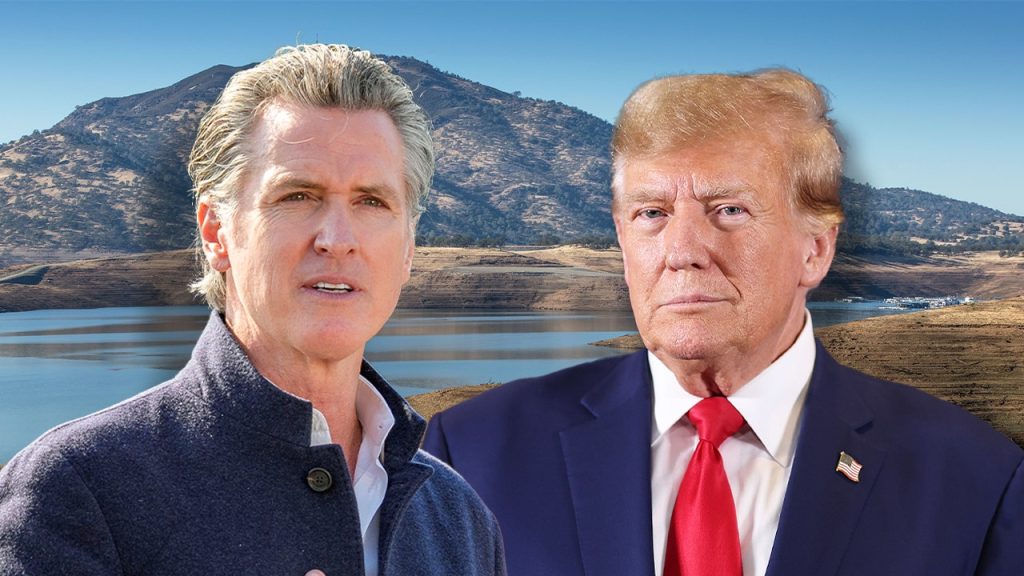In response to escalating wildfire challenges, California Governor Gavin Newsom has proclaimed a state of emergency to expedite wildfire prevention initiatives. Announced shortly after criticisms from former President Donald Trump regarding Newsom’s management of past wildfire disasters, the emergency order aims to bypass certain environmental regulations that have previously hindered effective forest management projects. This year alone has witnessed some of the most catastrophic wildfires in California history, prompting urgent action from state officials and necessitating a budget of approximately $2.5 billion for enhanced prevention measures.
| Article Subheadings |
|---|
| 1) Overview of the Wildfire Situation in California |
| 2) Governor’s Emergency Declaration and Its Implications |
| 3) Political Context: Trump’s Criticism and Newsom’s Response |
| 4) Funding and Resources for Wildfire Prevention |
| 5) Moving Forward: Collaborations and Future Plans |
Overview of the Wildfire Situation in California
The wildfire landscape in California has seen a dramatic escalation over the years, with 2023 shaping up to be particularly disastrous. As of mid-March, the state reported an alarming number of wildfires, leading to widespread evacuations and property damage. Over the past decade, climate change has contributed to increased temperatures, prolonged droughts, and significantly drier vegetation, heightening the fire risk. By addressing these multifaceted challenges, state officials are not only seeking to mitigate immediate concerns but also to establish a framework for long-term wildfire management.
Governor’s Emergency Declaration and Its Implications
On Saturday, Gavin Newsom formally declared a state of emergency to fast-track wildfire prevention initiatives across California. This declaration suspends various environmental regulations known to slow down essential forest management efforts. According to Newsom, the state has already faced unprecedented challenges this year concerning wildfires and their devastating impacts. The declaration aims to facilitate critical forestry projects designed to protect vulnerable communities across the state from the encroaching threat of wildfires. This move is expected to enhance the speed and efficiency of wildfire mitigation efforts significantly.
Political Context: Trump’s Criticism and Newsom’s Response
The emergency declaration by Newsom comes in the wake of stinging criticism from Donald Trump, who accused the governor of gross incompetence when it comes to managing California’s wildfire crises. The former president did not hold back, suggesting that Newsom should resign due to his handling of past disasters. “Gavin Newscum should resign. This is all his fault!!!” Trump stated, echoing sentiments that have fueled tension between state officials and the federal government regarding disaster response efforts. In response, Newsom dismissed Trump’s claims as “pure fiction” and emphasized the Governor’s commitment to comprehensive solutions, declaring once again the necessity for urgency in wildfire management.
Funding and Resources for Wildfire Prevention
To combat the increasing wildfire threats, California’s broader wildfire prevention strategies will require an estimated $2.5 billion. This funding is allocated for activities crucial to wildfire management, including controlled burns, suppression of fuel loads in fire-prone areas, and the establishment of public tracking systems for fire prevention initiatives. These measures aim not only to lessen the immediate risk posed by wildfires but also to promote sustainable forest management practices that can provide long-term protection to communities at risk. As part of their strategy, state officials are also coordinating with local entities and the federal government to secure resources that will enhance the effectiveness of these programs.
Moving Forward: Collaborations and Future Plans
Looking ahead, Gavin Newsom and his administration are committed to working collaboratively with various stakeholders, including federal officials and local governments, to expedite recovery and rebuilding efforts in the aftermath of wildfires. In early February, Newsom traveled to Washington, D.C., to seek federal support for disaster relief, expressing optimism following his meetings with lawmakers. He emphasized the importance of rapid response and the need for “unconditional disaster aid” to bolster the state’s efforts against wildfires. The governor also highlighted his administration’s ongoing dedication to cutting red tape, ensuring that survivors receive the resources they need in a timely manner.
| No. | Key Points |
|---|---|
| 1 | Governor Gavin Newsom declared a state of emergency to expedite wildfire prevention efforts. |
| 2 | This declaration allows for the suspension of certain environmental regulations that hinder wildfire management. |
| 3 | California faces a budget requirement of approximately $2.5 billion for effective wildfire prevention programs. |
| 4 | Former President Donald Trump criticized Newsom’s handling of the wildfire situation, leading to further political tension. |
| 5 | Future efforts will focus on collaboration between state and federal officials to enhance wildfire management strategies. |
Summary
The declaration of a state of emergency by Governor Gavin Newsom signifies a critical intervention in California’s battle against increasingly destructive wildfires. By alleviating regulatory constraints and mobilizing substantial resources, the state aims to bolster its wildfire mitigation efforts amidst political scrutiny and climatic challenges. Such measures reflect an urgent need to protect vulnerable communities and ensure that the lessons of the past resonate in future preparations for wildfire events in California.
Frequently Asked Questions
Question: What are the main goals of Governor Newsom’s emergency declaration?
The main goals include expediting wildfire prevention projects, suspending regulatory hurdles that inhibit forest management, and enhancing the speed of recovery efforts in fire-affected areas.
Question: How much funding is required for California’s wildfire prevention strategies?
California is estimated to require approximately $2.5 billion to effectively implement wildfire prevention measures, which include activities such as controlled burns and fuel load reduction.
Question: What was the reaction to President Trump’s criticism of Governor Newsom?
Governor Newsom responded to Trump’s criticism by labeling it as “pure fiction,” emphasizing his commitment to decisive actions for wildfire management and the protection of vulnerable communities.


